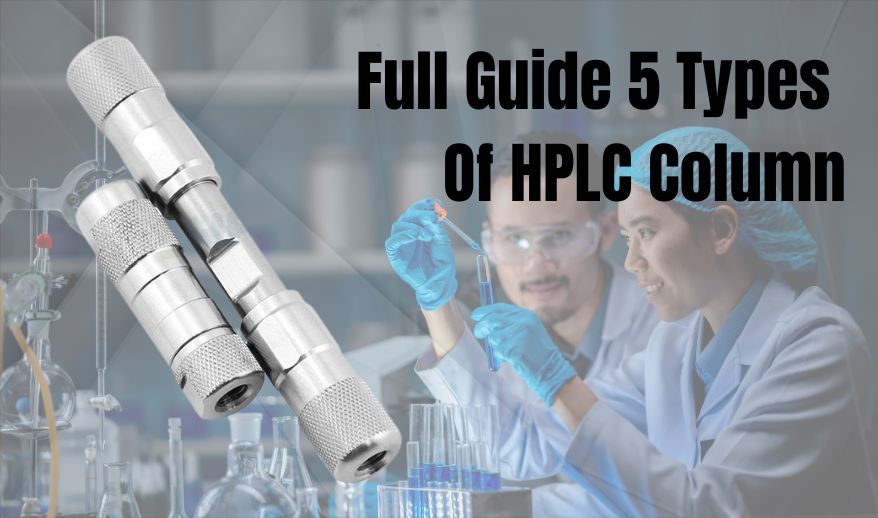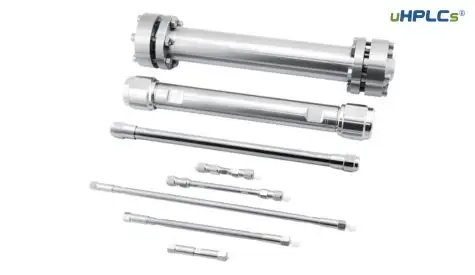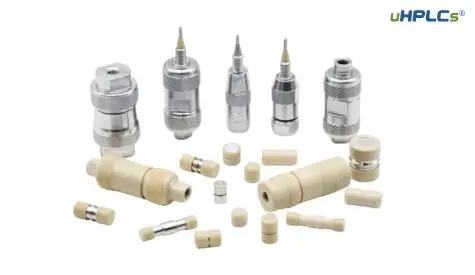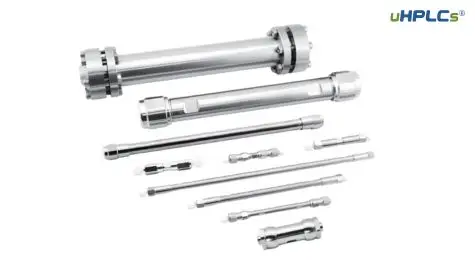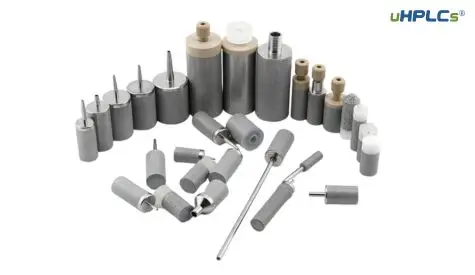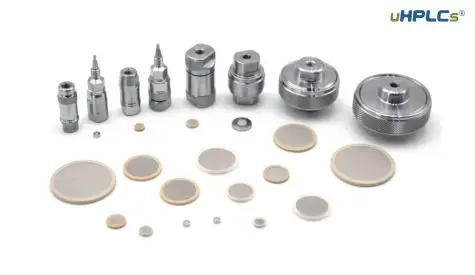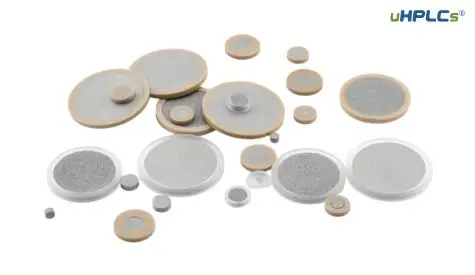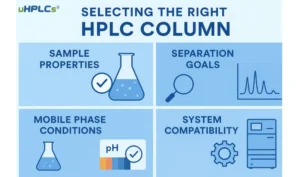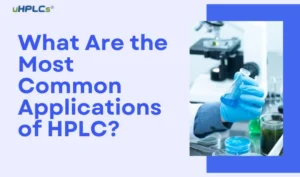Welcome to uHPLCs Class! In this session, we’ll explore the captivating realm of chromatography and delve into the diversity of HPLC columns.
To shed light on the underlying principles of chromatography, let’s embark on a simple experiment featuring butter, cane sugar, and water.
Through observing how these substances interact, we can gain insight into the core concepts of chromatographic separation.
1. Normal Phase Chromatography:
Normal phase chromatography was the pioneering technique in liquid chromatography. It involves a stationary phase with higher polarity than the mobile phase. The mobile phase typically comprises weakly polar solvents like n-alkane, while the stationary phase consists of polar materials such as silica gel. This technique exploits the principle of similarity and compatibility, separating compounds based on their polarity interactions with the stationary phase.
Here are some additional points you might find interesting:
- Selectivity: Normal phase chromatography is particularly useful for separating compounds with functional groups like alcohols, amines, and carboxylic acids. These functional groups can form hydrogen bonds with the polar stationary phase, leading to stronger interactions and later elution times.
- Choice of Solvents: Selecting the right mobile phase is crucial in normal phase chromatography. As you mentioned, weakly polar solvents like hexane are often used. However, sometimes small amounts of a more polar solvent, like methanol or ethanol, are added to fine-tune the separation. The polarity of the mobile phase affects how strongly solutes interact with the stationary phase, influencing their elution order.
- Applications: Normal phase chromatography has various applications across different fields. It’s commonly used in the purification of natural products, pharmaceuticals, and lipids. Additionally, it can be used to separate sugars, pigments, and other biomolecules.
Overall, normal phase chromatography remains a valuable technique for separating compounds based on their polarity. While reversed-phase chromatography is more widely used today, normal phase chromatography offers advantages for specific separations, particularly for highly polar or water-insoluble compounds.
2. Reversed-Phase Chromatography:
Reversed-phase chromatography, now widely adopted, operates in reverse to normal phase chromatography. Here, the mobile phase is highly polar (e.g., methanol-water), while the stationary phase is weakly polar, often composed of materials like octadecyl or C18 columns. By modifying the silica gel surface with a hydrophobic C18 chain, the column facilitates the separation of compounds based on their hydrophobicity. Reversed-phase chromatography offers several advantages over normal phase, including broader applicability, safer solvent usage, and greater flexibility in mobile phase selection.
Some breakdown of the key points you should know:
- Functioning Principle: Reversed-phase chromatography flips the script on normal phase by using a polar mobile phase and a non-polar stationary phase. This creates an environment where more hydrophobic solutes (those that “fear” water) interact more strongly with the stationary phase and elute later.
- Stationary Phase: Commonly used stationary phases include C18 columns, which have octadecyl (18-carbon) chains bonded to silica gel particles. These long carbon chains create a hydrophobic environment for solutes to interact with.
- Mobile Phase Advantage: A significant advantage of reversed-phase chromatography is the use of water-based mobile phases. This allows for the separation of biological molecules and other water-soluble components that might not be soluble in the non-polar solvents used in normal phase chromatography. Additionally, water-based mobile phases are generally considered safer to handle than some organic solvents.
- Versatility: The ability to adjust the polarity of the mobile phase in reversed-phase chromatography using mixtures of water and organic solvents (like methanol or acetonitrile) provides greater flexibility in optimizing separations for different types of analytes.
In summary, you’ve accurately described the key features and advantages of reversed-phase chromatography, making it the dominant choice for many liquid chromatography applications today.
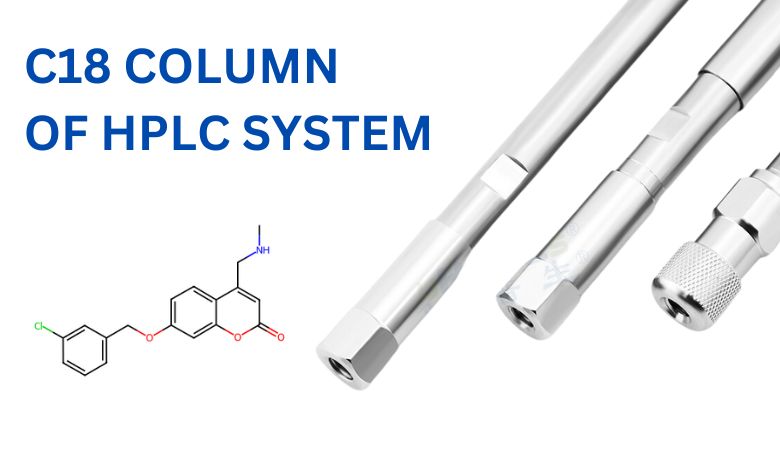
Table Summarizing Key Aspects of Normal Phase and Reversed-Phase Chromatography Columns
Normal Phase vs. Reversed-Phase Chromatography
| Feature | Normal Phase Chromatography (NPC) | Reversed-Phase Chromatography (RPC) |
|---|---|---|
| Separation Mechanism | Polarity | Hydrophobicity |
| Stationary Phase | Polar (e.g., silica gel) | Non-polar (e.g., C18) |
| Mobile Phase | Non-polar organic solvents (e.g., hexane) | Polar organic solvents with water (e.g., methanol-water) |
| Suitable for | Moderately polar to non-polar compounds | Non-polar to moderately polar compounds |
| Advantages | Good for separating compounds with functional groups | Broader applicability, safer solvents |
| Limitations | Strong solvents can damage some samples | Not ideal for highly polar compounds |
| Similarities | Both separate based on interactions between analytes and the stationary phase | Both utilize a mobile phase to carry the sample through the column |
| Differences | Stationary phase polarity is opposite (polar vs. non-polar) | Mobile phase polarity is opposite (non-polar vs. polar with water) |
3. Hydrophilic Interaction Chromatography (HILIC):
HILIC fills the gap for compounds unsuitable for normal or reversed-phase analysis, such as sugars. Leveraging a column similar to normal phase chromatography and a mobile phase resembling reversed-phase conditions (e.g., acetonitrile/water), HILIC allows for the separation of highly polar compounds. This technique has gained popularity, particularly in LC-MS applications, for its ability to dissolve samples effectively while ensuring proper separation.
Hydrophilic interaction chromatography (HILIC) is a powerful tool for separating highly polar compounds that might struggle with traditional normal or reversed-phase chromatography. Here’s a closer look at HILIC:
- Bridging the Gap: As you mentioned, HILIC combines aspects of both normal and reversed-phase chromatography. It utilizes a polar stationary phase, similar to normal phase, but employs a mobile phase with a high percentage of organic solvent (like acetonitrile) mixed with water, much like reversed-phase.
- Separation Mechanism: In HILIC, the water in the mobile phase forms a layer on the polar stationary phase. Solutes partition between this water layer and the organic mobile phase based on their polarity. More polar solutes interact more with the water layer and elute later, achieving the desired separation.
- Advantages for Polar Compounds: HILIC offers a significant advantage for separating highly polar compounds that wouldn’t retain well under normal-phase conditions and might be deactivated by the strong solvents used in reversed-phase chromatography. Additionally, HILIC often provides good compatibility with mass spectrometry (LC-MS) due to the use of water-containing mobile phases.
Here are some additional points to consider:
- Mobile Phase Composition: The typical mobile phase in HILIC applications consists of a high percentage of organic solvent (often 60-90% acetonitrile) with a low percentage of water (usually less than 10%) containing salts or buffers.
- Selectivity: HILIC can effectively separate various biomolecules like peptides, polar metabolites, and pharmaceuticals based on their polarity and charge.
- Growing Applications: HILIC is becoming increasingly popular in pharmaceutical and biological research due to its ability to handle complex and highly polar samples.
Overall, HILIC provides a valuable alternative for chromatographic separations, particularly for highly polar analytes that might pose challenges in other chromatography techniques.
4. Ion Pair Chromatography and Ion Exchange Chromatography:
For compounds requiring enhanced ion interactions, ion pair chromatography and ion exchange chromatography are invaluable. Ion pair chromatography involves the addition of ion-pairing reagents to the mobile phase to improve interactions between the analyte and the stationary phase. On the other hand, ion exchange chromatography separates compounds based on their charge properties, making it suitable for separating ions or ionizable compounds.
Ion pair chromatography (IPC) and ion exchange chromatography (IEC) are both powerful techniques for separating charged or ionic compounds. Here’s a breakdown of their key differences:
Ion Pair Chromatography (IPC):
- Mechanism: IPC relies on the addition of ion-pairing reagents to the mobile phase. These reagents are ionic molecules with one end having a charge similar to the analyte of interest and the other end having a hydrophobic tail.
- Action: The ion-pairing reagent interacts with the analyte ion to form a neutral ion pair. This ion pair can then interact with the stationary phase through hydrophobic interactions between the reagent’s tail and the stationary phase.
- Mobile Phase: The mobile phase in IPC typically consists of a mixture of an organic solvent and an aqueous buffer, along with the added ion-pairing reagent.
- Selectivity: IPC offers selectivity based on a combination of the charge of the analyte and its hydrophobic character. By adjusting the ion-pairing reagent and the mobile phase composition, you can fine-tune the separation of analytes.
Ion Exchange Chromatography (IEC):
- Stationary Phase: IEC utilizes a stationary phase that contains charged functional groups. These groups can be either cations (positively charged) or anions (negatively charged), depending on the type of ion exchange chromatography.
- Separation Principle: Separation in IEC occurs based on the electrostatic interactions between the charged analytes and the charged groups of the stationary phase. Analytes with a stronger attraction to the stationary phase will elute later.
- Mobile Phase: The mobile phase in IEC usually consists of an aqueous buffer with varying pH. By adjusting the pH of the buffer, you can control the charge state of the analytes and influence their retention on the column.
- Selectivity: IEC offers high selectivity for separating ions based on their charge and size. It’s particularly useful for separating ionic compounds like inorganic cations and anions, organic acids, and bases.
Here’s a table summarizing the key differences between IPC and IEC:
| Feature | Ion Pair Chromatography (IPC) | Ion Exchange Chromatography (IEC) |
|---|---|---|
| Stationary Phase | Non-charged | Charged functional groups |
| Mobile Phase | Organic solvent, buffer, ion-pairing reagent | Aqueous buffer with varying pH |
| Separation Mechanism | Interaction between ion pair (analyte-reagent) and stationary phase | Electrostatic interaction between analyte and stationary phase |
| Selectivity | Charge and hydrophobicity | Charge and size |
| Suitable for | Ionic and ionizable compounds | Ions and ionizable compounds |
5. Gel Chromatography:
Unlike other chromatographic methods, gel chromatography primarily separates compounds based on size rather than polarity. Also known as size exclusion chromatography, it involves a porous stationary phase through which larger molecules elute faster than smaller ones. Gel chromatography finds applications in separating biomolecules and polymers based on their molecular size.
Let’s deeper dive into this HPLC Column technique:
Separation based on Size: Unlike other chromatography methods that rely on polarity or charge interactions, gel chromatography separates molecules based on their size. The stationary phase consists of a gel matrix with pores of varying sizes.
How it Works: When a sample is injected, smaller molecules can access the entire pore network within the gel matrix, leading to a longer path and hence, a longer elution time. Conversely, larger molecules are excluded from some or all of the pores and elute faster through the column.
Stationary Phase: The gel matrix in gel chromatography is typically made from materials like agarose or dextran. These materials have well-defined pore sizes that allow for separation based on molecular size.
Applications: Gel chromatography is a valuable tool for separating biomolecules like proteins, nucleic acids, and polysaccharides based on their molecular weight. It’s also widely used in polymer science to determine the molecular weight distribution of polymers.
Here are some additional points to consider:
- Calibration: To determine the molecular weight of unknown samples using gel chromatography, the column needs to be calibrated with standards of known molecular weights.
- Limitations: While size is the primary separation factor, shape can also play a role. Very elongated molecules might elute earlier than expected due to their inability to fully access the pores.
Overall, gel chromatography is a powerful technique for separating and characterizing molecules based on their size, making it a valuable tool in various fields like biochemistry and polymer science.
Conclusion:
In this session, we’ve explored five fundamental types of HPLC columns, each offering unique advantages and applications.
From the traditional normal phase and reversed-phase chromatography to specialized techniques like HILIC, ion pair, ion exchange, and gel chromatography, the world of liquid chromatography offers a diverse toolkit for analytical chemists.
For further inquiries or assistance, feel free to contact us at sales@uhplcs.com.

